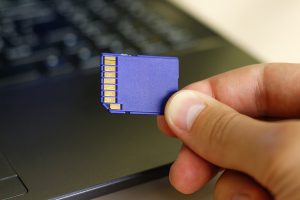Bring on the Data! Foreign (non-NEMon) Holter Data Formats Welcome!
 Keys to the software world are frequently in the form of proprietary formats. Indeed, that is the case with NEMon Holter systems. The data users record on SD cards in the current suite of recorders (DR181, DR200/HE, and DR300), are written into a proprietary file format and stored as a flash.dat file. When you move the data from an SD card to a patient directory, you are really moving the flash.dat file from the SD card to its new location in a patient database.
Keys to the software world are frequently in the form of proprietary formats. Indeed, that is the case with NEMon Holter systems. The data users record on SD cards in the current suite of recorders (DR181, DR200/HE, and DR300), are written into a proprietary file format and stored as a flash.dat file. When you move the data from an SD card to a patient directory, you are really moving the flash.dat file from the SD card to its new location in a patient database.
 When the analysis or processing of that data begins, the first thing that happens is that the flash.dat file is converted to an intermediate binary format (IBF). NEMon has essentially placed this intermediate binary file format in the public domain and will share that format information with (almost) any non-NEMon recorder manufacturers. We want this analysis environment to become ubiquitous!
When the analysis or processing of that data begins, the first thing that happens is that the flash.dat file is converted to an intermediate binary format (IBF). NEMon has essentially placed this intermediate binary file format in the public domain and will share that format information with (almost) any non-NEMon recorder manufacturers. We want this analysis environment to become ubiquitous!
The IBF files can entail one file per channel or one grand file containing all channels. We have shared this format with dozens of ambulatory ECG recorder vendors, and the most common approach they have taken has been to create a single file per channel. Thus, a three-channel Holter recording would be in three separate files. Or, in the case of single (1CH) or double (2CH) channel patch types of devices (of which there has been a figurative “explosion” lately), there would be one or two separate IBF files.
Now what? Here comes the special sauce that makes this so marvelous! For use by the world of non-NEMon recorder users, NEMon provides a number of very slick utilities. These utilities are fully available and documented and convert the IBF to a NEMon file called datacard.dat. Then this file is moved into the requisite (and usually empty) patient directory file structure. Once the data is in this datacard.dat format, the entire NEMon HE/LX (helix) environment can proceed as per “normal.” The full range of beat categorization, relabeling, reports, and more are now available to the user for that recording. Very cool!
Using this flow via the IBF or datacard.dat file requires the ability to read the datacard.dat file directly — and NEMon professionals have made this a license-able option. Users who wish to bring non-NEMon Holter data into the HE/LX (helix) Analysis environment must have this license option to do so.
So now you know: The next time your technician is complaining about her or his analysis environment, say, “Get HE/LX (helix) from NEMon. It will work with any Holter!”
[cta]We’re looking to you, our user community, to help NEMon define the new or modified functionality you’d like to see in our products. Tell us by email at info@nemon.com or call us at 978-461-3992 or toll-free at 866-346-5837 option 2 (U.S. and Canada).[/cta]For more information about NorthEast Monitoring products and how we can provide you with the best monitoring systems for your business, view this short movie:


